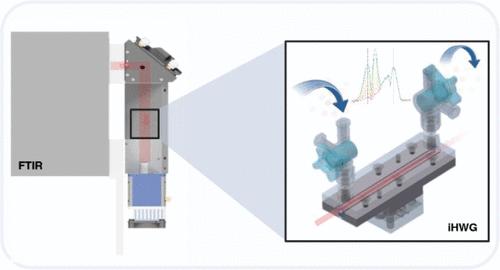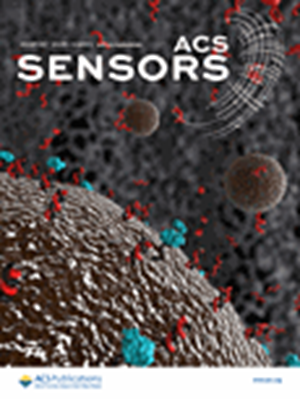Helicobacter pylori Breath Test via Mid-Infrared Sensor Technology
IF 8.2
1区 化学
Q1 CHEMISTRY, ANALYTICAL
引用次数: 0
Abstract
Helicobacter pylori infection has been associated with various gastrointestinal disorders, most notably with the development of gastric cancer. Therefore, it is important to develop technologies for effective, rapid, sensitive, and personalized infection detection. The present study evaluates the utility of mid-infrared (MIR) exhaled breath sensors utilizing substrate-integrated hollow waveguide (iHWG) technology for the precise determination of the isotopic ratio of 13CO2 vs 12CO2 simulating conditions relevant to the detection of the presence of Helicobacter pylori in the upper gastrointestinal tract via exhaled breath analysis. For future integration of such a sensing module, e.g., into a cell phone attachment, optimized light–gas interaction and sufficient sensitivity are essential, as the diagnosis is based on detecting the presence of 13CO2 30 min after administration of 13C-labeled urea via a gel or pill, which is metabolized by H. pylori. By optimizing the light–gas interaction volume via tailoring of the iHWG, it was demonstrated that sufficient sensitivity and accuracy are achieved for detecting small changes in the isotopic composition of exhaled CO2. While it was demonstrated that the combination of conventional Fourier-transform infrared (FTIR) spectroscopy with iHWGs indeed confirms the utility of this noninvasive breath analysis concept, further device miniaturization utilizing quantum cascade lasers is anticipated to achieve the necessary level of integration for personalized home usage.

求助全文
约1分钟内获得全文
求助全文
来源期刊

ACS Sensors
Chemical Engineering-Bioengineering
CiteScore
14.50
自引率
3.40%
发文量
372
期刊介绍:
ACS Sensors is a peer-reviewed research journal that focuses on the dissemination of new and original knowledge in the field of sensor science, particularly those that selectively sense chemical or biological species or processes. The journal covers a broad range of topics, including but not limited to biosensors, chemical sensors, gas sensors, intracellular sensors, single molecule sensors, cell chips, and microfluidic devices. It aims to publish articles that address conceptual advances in sensing technology applicable to various types of analytes or application papers that report on the use of existing sensing concepts in new ways or for new analytes.
 求助内容:
求助内容: 应助结果提醒方式:
应助结果提醒方式:


